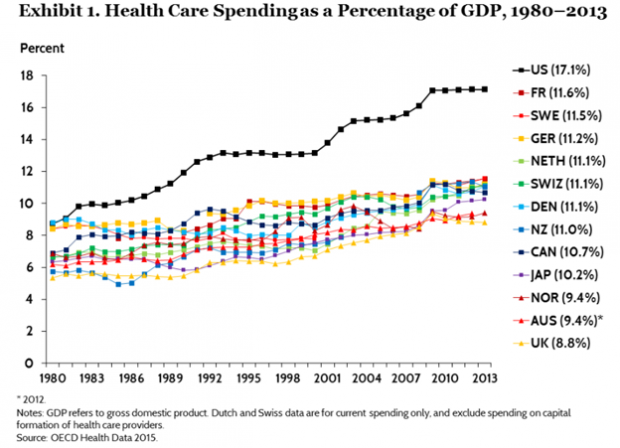Over the last three decades, health care spending as a percentage of the economy has grown much faster in the U.S. than in other industrialized countries.
As professors Austin Frakt and Aaron E. Carroll write in The New York Times, numerous studies, including a recent one in the Journal of the American Medical Association, have found that the reason spending has surged largely boils down to prices rather than the amount of care Americans receive.
What can be done about it? Here’s Frakt and Carroll’s answer: “There are ways to combat high health care prices. One is an all-payer system, like that seen in Maryland. This regulates prices so that all insurers and public programs pay the same amount. A single-payer system could also regulate prices.”
There are other options, as well, but the authors throw in a warning about making systemic changes to the health care system: “If attempted nationally, or even in a state, either of these would be met with resistance from all those who directly benefit from high prices, including physicians, hospitals, pharmaceutical companies — and pretty much every other provider of health care in the United States … Though it’s reasonable to push back on high health care prices, there may be a limit to how far we should,” they conclude.
That notion struck economist Dean Baker as odd.
“For some reason, Frakt and Carroll believe that comparable efforts … to reduce excess payments in the health care sector are a bad idea because the people who would see their pay and income reduced will be unhappy,” he wrote in response to the Times piece, noting that economists had no problem backing free trade efforts that reduced pay for industrial workers.
“In this context, it is probably worth mentioning that there is hugely more money at stake in bringing our health care costs in line with the rest of the world than with reducing trade barriers with items like steel and cars. The latter can save us at most a few tens of billions a year. If we paid the same amount per person for health care as people in Canada or Germany, the savings would be more than $1.5 trillion annually, more than $4,000 per person per year.”






